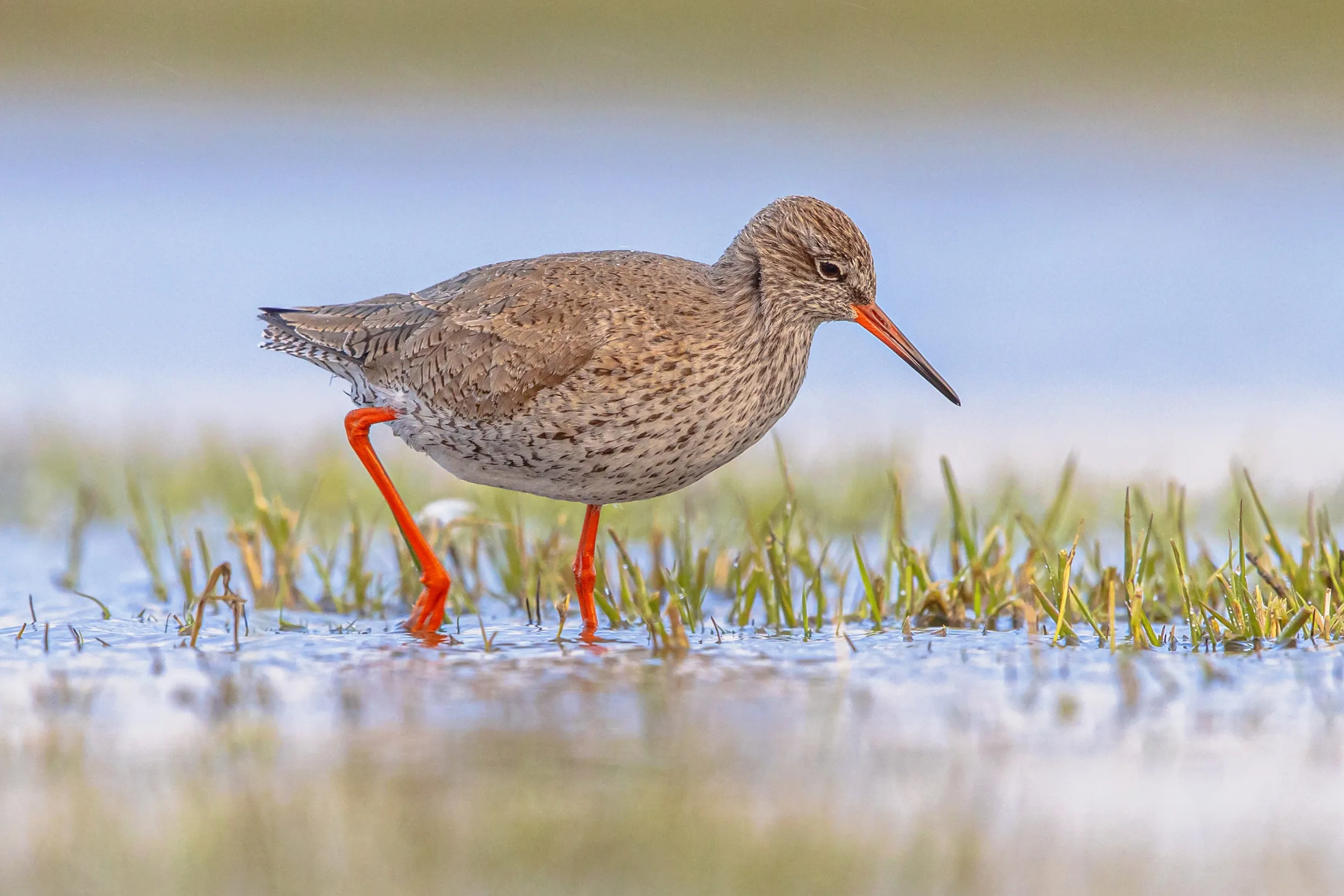How you can help ground nesting birds during breeding season
Discover how small changes to your countryside adventures can make a big difference.

On this page
If you ask a child where bird’s nest, they are likely to say a tree, hedge or nest box. It’s an image we’ve all grown up with but for some of our most threatened species it’s simply not true. Over half of England’s most threatened breeding species nest on or near to the ground, including Curlew, Little Tern, Ringed Plover, Skylarks and Nightjars. Almost every natural habitat in the English countryside can be home to ground nesting birds and these threatened species are under increasing pressure due to habitat loss, predators and climate change.
More people than ever are enjoying the benefits that spending time in the countryside offers for our health and wellbeing too. Yet for ground nesting birds this can cause additional pressure during breeding season, when the places they nest in become busy with visitors who often don't realise that there may be birds nesting on the ground.

As birds nesting on the ground are at higher risk from predators; the nests and eggs they contain are often extremely well camouflaged, making them very hard to see and avoid.
“A skylark egg can be as small as 17mm, that's around the width of a 5 pence piece. If their nest is disturbed adult birds will often move away quietly, and the chicks will stay silent to avoid detection. It might not always be obvious that a nest has been disturbed and put at risk. However, on other occasions adult birds may try to distract you away from the nest by calling out loudly in distress, in this case you should back away carefully. Staying on marked paths and keeping dogs on a short lead at this time of year are two of the best ways to help avoid disturbing these nests.” – Mike Shurmer, Head of Species for RSPB England.

What you can do
The good news is that it's very simple to help give ground nesting birds the space they need during the breeding season for the best chance of survival.
Stick to marked paths
Birds will often nest in areas that are away from pathways. Sticking to paths gives them the space they need.
Keep dogs close by and on short leads
When walking in the countryside and on beaches – just because you can’t see any birds doesn’t mean they’re not there. Eggs and chicks are highly camouflaged to help avoid being seen by predators, which makes them harder for us to see too.
Pack a picnic not a BBQ
Dispose of any rubbish and cigarettes safely, carelessly discarded cigarettes and rubbish can be a fire hazard especially in hot and dry environments.
Many coastal areas can be home to ground nesting birds
Little Terns, Ringed Plovers and Oystercatchers often lay eggs in shallow indentations amongst the pebbles near the tideline making them difficult to spot. At this time of year, precocial chicks such as Ringed Plovers and Oystercatchers are exploring the beaches, running around on exposed sand and along the water’s edge. This is when they’re at their most vulnerable. Keeping dogs on leads can make a massive difference, allowing chicks and their parents space to get out of the way.

Wetlands are key for wading ground nesters
Including Lapwing and Redshank, which make their nests in wet grassy fields, before leading chicks to wetter areas to feed. Young chicks are at greatest risk when separated from parent birds. Parents will often leave a nest to detract predators away from it, sometimes leaving chicks to get wet and cold, which can be fatal.

Rare birds like Woodlark and Nightjar nest on heathland sites
Heathlands are often popular places to walk, cycle, horse ride and picnic too. Woodlarks make nest cups on the ground, laying 3-5 eggs, whereas Nightjars don’t even make a nest. They lay their two eggs directly on the ground. The adult bird so highly camouflaged they can easily be bypassed as leaf litter or ground cover. Fire risk can also be very high on heathlands, so pack a picnic rather than a BBQ and take any litter home. Glass bottles glinting in the sun are a real fire starter with discarded rubbish and dry vegetation the tinder.

Uplands and moors are vitals homes to ground nesting birds
Curlews, Lapwings, Golden Plovers and Snipe, all make shallow loosely vegetated and highly camouflaged nests on the ground. In some upland moorlands Hen Harriers, one of the UK's most threatened birds of prey, also nest on the ground, laying 4-5 eggs in a nest amongst the heather. To protect the nest site the female sits on the nest whilst the male hunts. Already suffering intense persecution these birds need the best chance they can get.

Our conservation scientists have developed methods to help protect nesting birds from environmental threats including climate change, wildfire and sea level rise, which are delivered through managing landscapes for wildlife. We have several projects across the UK protecting a variety of ground nesting bird species. If you come across one of these projects, always read and follow any advice on signage and pay attention to fenced off areas. If there’s chance, chat to project volunteers who are always happy to pass on information about breeding birds and their chicks.
We are seeing fantastic results from our conservation work for ground nesting birds including Stone Curlews and Little Terns on Chesil Beach, Dorset, but to protect ground nesting birds countrywide, everyone needs to play their part.
We work closely with partners and communities to protect wildlife across our network of over 220 UK nature reserves and in the wider countryside.